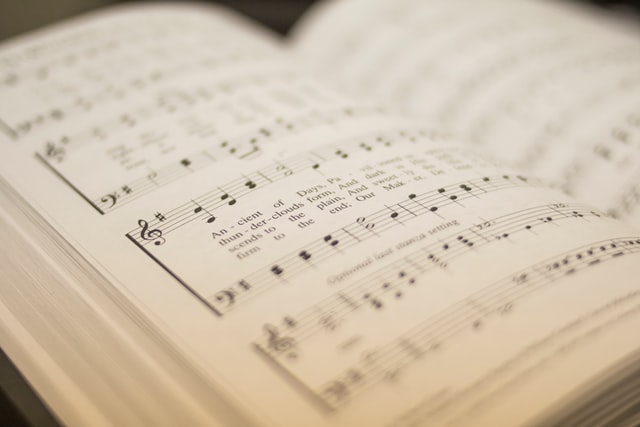Western written music is a language that has been evolving for thousands of years, and even the music we read today has existed for over 300 years. Musical notation is a representation of sound using symbols, from basic notations regarding pitch, duration and time, to more advanced descriptions of expression, timbre, and even special effects. How to read music?
Take care of service. Before you start learning music, you need to understand the basic information that practically everyone who reads music should know. The horizontal lines on a piece of music form a staff. This is the most basic of all musical symbols and the basis of everything that is to happen.
- A cane is a system of five parallel lines and spaces between them. Both lines and spaces are numbered for reference purposes and are always counted from the lowest (bottom of the staff) to the highest (top of the staff).
Start with the treble clef. One of the first things you’ll encounter while reading music is the key. This sign, which looks like a large, fancy italic symbol at the left end of a staff, is a legend that tells you roughly how much your instrument will play. All instruments and voices in the upper ranges use the treble clef and for this introduction to reading music we will focus primarily on this key in our examples.
- The treble clef, or G key, comes from the decorative Latin letter G. One good way to remember this is that the line in the middle of the “swirl” of the key wraps around the line representing the G note. When you add staff notes in the treble clef, they will have the following values :
- Five lines from bottom to top represent the following: EGBD F.
- Four spaces, from bottom to top, represent the following notes: FAC E.
- This may seem like a lot to remember, but you can use mnemonics – or verbal hints – that can help you remember them. In the poems “Every Good Boy Does Fine” is a popular mnemonic, and spaces mean the word “FACE”. Exercise using the online note recognition tool is another great way to strengthen those associations.
Meet the bass key. The bass key, also known as the F key, is used for instruments in the lower registers, including the left hand piano, bass guitar, trombone and so on.
- The name “key F” comes from the Gothic letter F. Two dots on the key lie above and below the “F” line on the staff. The bass key stick represents different notes than the treble clef.
- Five poems, from bottom to top, make the following comments: GBDFA (“Good boys are not fooling around”).
- Four spaces from bottom to top represent the following: ACEG (“All cows eat grass”).
Learn parts of the note. The individual note symbols are a combination of a maximum of three basic elements: note head, stem and flags.
- Head notes. It is an oval shape that is open (white) or closed (black). Simply put, it tells the performer what note to play on the instrument.
- The stalk is a thin vertical line attached to the head of the note. When the shaft is pointing up, it joins the right side of the note head. When the stem is down, it connects to the note head on the left. The direction of the core does not affect the note, but makes the notation easier to read and less cluttered.
- Flag This is a curved stroke attached to the end of the shaft. Regardless of whether the shaft is connected to the right or left head of the note, the flag is hung on the right side of the shaft, never on the left!
In summary, the note, mandrel and flag or flags show the musician the time value for each note, measured in beats or fractions of beats. When you listen to music and tap your foot to the rhythm of the music, you recognize this rhythm.








